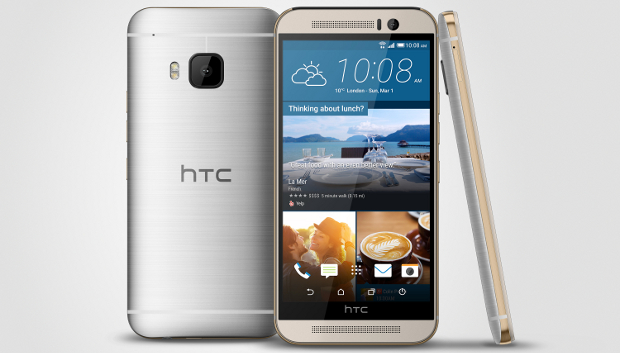Fans of the HTC One M8 should be happy enough with its follow-up revealed at Mobile World Congress. While the M9 has plenty of changes in specification, the sleek design remains largely unchanged from its predecessor.
At the heart of the M9 is an upgrade to the system-on-chip. Moving from the Snapdragon 801 to the 810 will provide a measurable increase in performance, especially for graphics, photo, and video. RAM is boosted from 2Gb to 3Gb, too.
All that additional 3D graphics muscle isn’t wasted on a higher resolution display, either. The screen in the M9 is the same as in the M8, measuring 5″ with a resolution of 1920×1080. That may be bad news for those hoping for a Quad HD display, but at this screen size, Quad HD is arguably a waste. Certainly, HTC feels higher pixel density isn’t worth the tradeoff in cost, battery life, or graphics performance.
One of the major features of the M8 to be overhauled is the ill-fated Duo Camera. It combined an UltraPixel camera sporting a paltry 4MP resolution with a secondary depth camera. It was supposed to offer amazing low-light performance and enable all sorts of cool features like changing the focal point after the shot. Unfortunately, the low-light shooting really wasn’t that much better than other premium phones, and all those nifty photo editing tricks never caught on.
So the M9 dumps Duo Camera for a single 20MP camera, capable of 4K video recording and 720p/120fps slow motion video.
The UltraPixel camera isn’t dead, though. It’s just moved around to the front, where better low-light performance is sorely needed, and the limited resolution isn’t a problem.
If you don’t look at the camera module on the back, where two cameras is now one, the M9 looks almost exactly like the M8. HTC has managed to trim the length by a couple millimeters by reducing the width of the black HTC-branded bar beneath the display, but it’s still a rather long phone. The stereo speaker grills still prominently surround the screen (and should provide even better sound, thanks to new Dolby Audio technology). The brushed aluminum shell is the same shape, with a slightly less curved back.
Fortunately, HTC has moved the power button from its difficult-to-press location along the top to an easy-to-reach spot on the side, just beneath the volume buttons.
There’s also a new silver and gold two-tone design to go along with the standard gunmetal grey.
Sense
The new Sense 7 user interface feels a lot like Sense 6 with themes. Sense 7 is built on Android Lollipop, but it still looks a lot like Sense 6. Most of the menus, fonts, and icons carry the same design, and many core Lollipop design elements are missing.
The key focus of Sense 7 is customisation. An advanced theme editor lets you pick from a gallery of professional themes that change the background, colors, fonts, back/home/apps buttons, and clock widget.
A new home screen widget shows a selection of apps that changes based on your location, surfacing your most frequently used apps at home, work, or on the go.
The HTC One M8 had great design and craftsmanship, premium all-metal construction, industry-leading sound quality, and comparatively lean and mean software. But it’s a year later, and times have changed. Other manufacturers have stepped up their game, on both the hardware and software side. Can a relatively modest evolutionary update to last year’s best phone compete?
IDG News Service








Subscribers 0
Fans 0
Followers 0
Followers